Using SMILE (Secondary Mathematics Individualized Learning Experiment)
I came across SMILE cards in Jo Boaler’s Mathematical Mindsets. Teachers in London worked together to create sets of mathematical cards to be more engaging and culturally sensitive to the needs of the students.
SMILE teachers would work by assigning each student 10 cards, which the students would work through and show to the teacher, who was then gave 10 more cards.The cards were individually assigned, but many students asked to find a partner to work on the mathematical ideas together.
As the cards were individualized, students would work through them at their own pace, and teachers would walk around and help the students. In my own experience of teaching SMILE, I observed highly engaged students who would excitedly collect their cards, knowing that their achievement was in their own hands.(Boaler, 2015, p. 118)
I have been interested in gamification and in the last few months, a major influencer in my Math teaching career has been Alicia Woody. As a gamification enthusiast and implementer herself and a Math teacher on top of that, I brainstormed the idea of gamifying my Math classroom with the SMILE cards with her.
An important objective that I want to achieve with my Math students is to get them to see the real-world applications of Math, to realize that Math is everywhere around us and is applicable in every walk of life.
The game is catered towards Grades 9–12, adapted according to their learning objectives and difficulty. The puzzles are cross-curricular in nature and, hence, would require input from other subject teachers.
Here is what we came up with!
The Setting

Inspired by recent Netflix series Lost in Space, the theme for the Math class (and the game) would be habitation of a new planet. The students have just arrived on a new planet and together they must make it home. They will be divided randomly into guilds, each representing a different spaceship that they travelled in. The guilds would further be divided into teams of 2. Each guild would start with some amount of water and food, some of which will deducted each week as it gets used up. We will assume here that this planet has oxygen and we do not need to worry about the atmosphere.
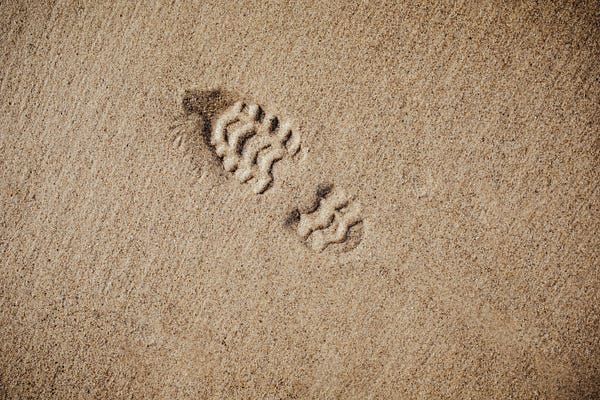
The guilds will explore the terrain of the planet, test the wildlife that they find, build shelters to live in and much more! Through the year, we will be on a journey to explore this planet and using our mathematical skills, we will solve the catastrophic situations we encounter. To ensure the general working of the colony and existence of human race, there will also be regular tasks and challenges that would need to be overcome.
Rules, Goals and Objectives:
Since I want my students to see the applications of Math, the situations will be rooted in the setting of the new planet while at the same time, requiring them to use their math skills to overcome the problems. As prior inhabitants of Earth, the students would have access to how situations are solved on Earth and they would then apply that knowledge to the new setting where they have been placed.
The Puzzles:
The teams in the guilds will work together when they encounter the catastrophic events, such as volcanic eruptions. For each of these events, they would have to build artifacts within a week to help them survive the calamity. For example, if we are learning about area and volume in the class and currently the explorers are near a water body, there might be catastrophic event that talks about algae growth in the water and how they can get up a water purification system before they run out of water.
Consider this problem about volcanoes posted by Dan Meyer. A similar one with some additions about a possible artifact (a plan to move all the spaceships or shelters that they have built to a new location within a time constraint) the students could build can be set on the planet that students are exploring. 🙂
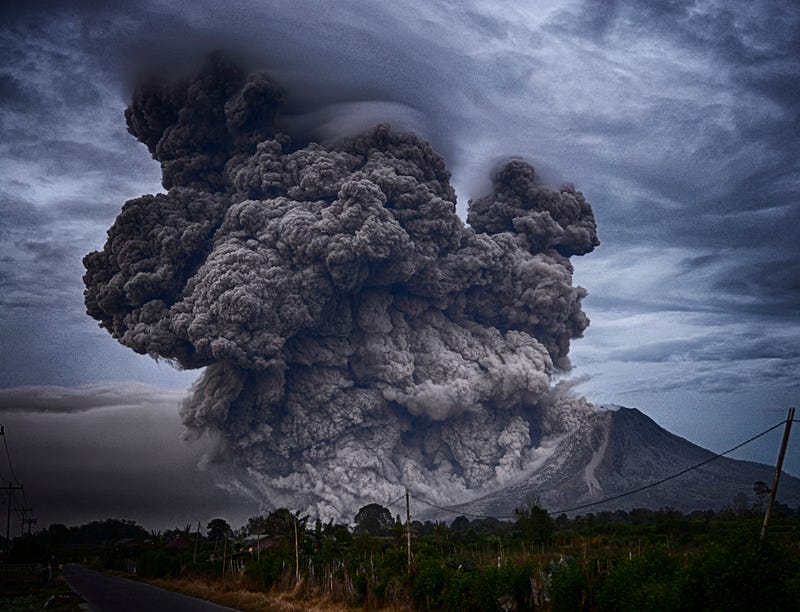
The second puzzles would be the SMILE cards themselves. Since there are a number of areas where math skills are needed from production of food to building shelters and planning roads, teams will have the choice to pick which area they would like to start with. When a team successfully solves a set of SMILE cards, they would be able to get an extra amount of water or food or any other resources that they might need for the whole guild. Thus, the teams constituting the guilds must decide how they can maximize their food and water.
The intention is that everyone will explore the application of the Math concepts in the areas that make the most sense in helping the guild survive, while at the same time learning about the interdisciplinary application of Math.
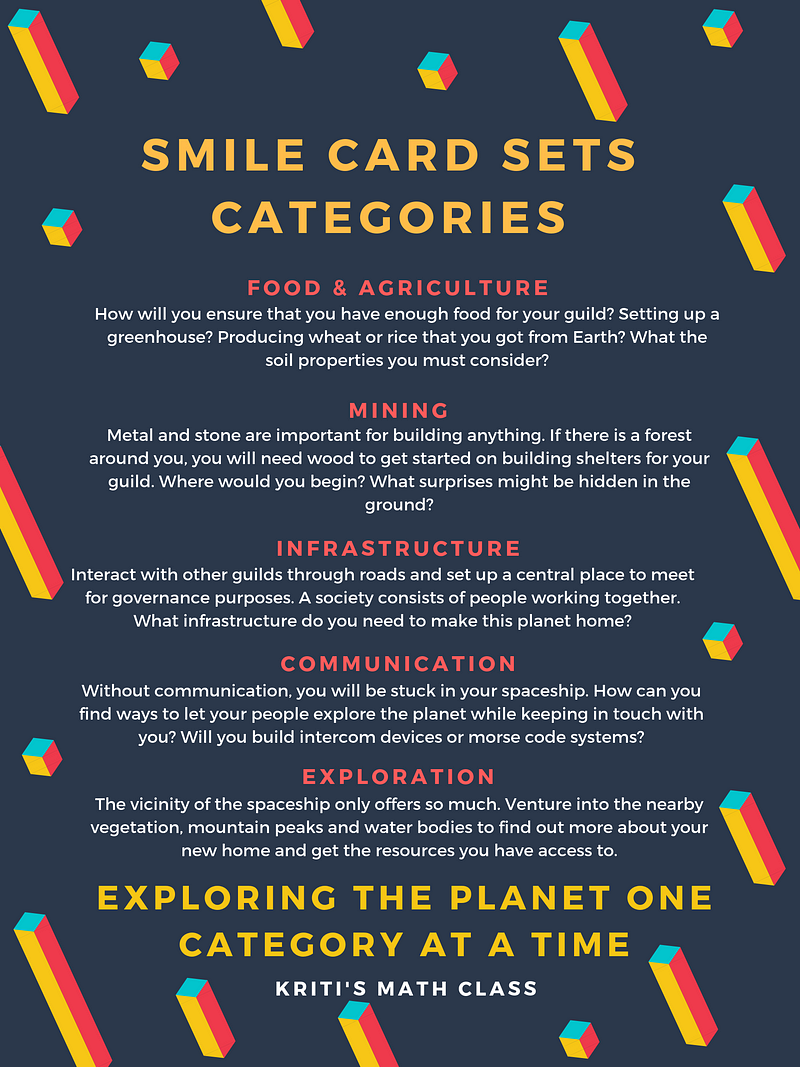
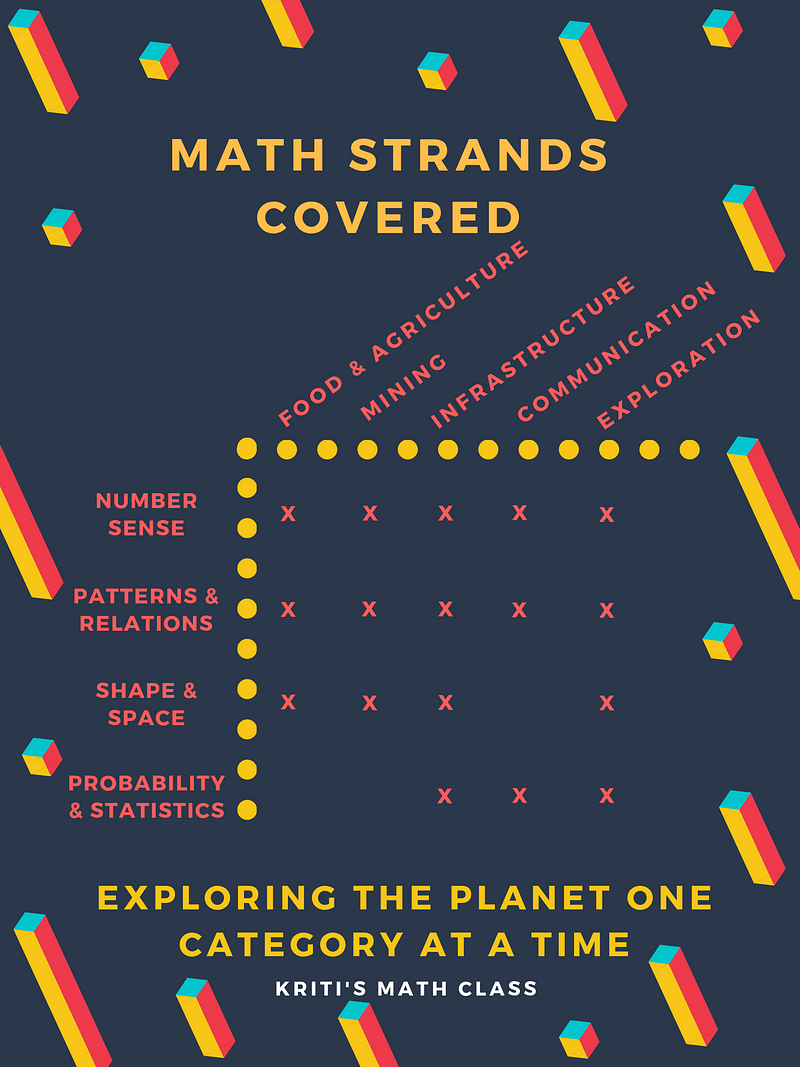
Once I start researching and creating the cards, it is possible that all categories are able to cover all strands. That would be amazing indeed!
The Levels:
For each set of SMILE cards related to a topic, there would be three levels of cards. The set for Level 1 would cover less content in 5 questions. The set for Level 2 would have 8 questions, covering more content with slightly more difficulty. The last level set would have 12 questions and the questions would require using almost all concepts that we have covered in the class.
As we progress through the curriculum, students will learn many Math concepts. A SMILE card set covers multiple strands and to allow students to be able to work with a set of cards without necessarily knowing the concepts we are yet to cover in class, Level 1 cards would be more focused on brushing up concepts from previous grades. Level 2 onwards, the questions would pertain to the new subconcepts that they would be learning in class. Level 3 would have harder questions as well.
Points:
There are points for completing all puzzles. For the catastrophic events, the first three teams to solve it correctly and creatively get the maximum points while others get lesser points. The idea behind the catastrophic events is to build a physical or digital artifact that they would be able to keep. This is also an area where I can teach students about the principles of design thinking, for instance.
The team winning the catastrophic event would get some privileges. They would be able to assign a set of SMILE cards to another guild, jeopardizing the strategy the guild had decided on, take some water or food as tax from one or more of the guilds that did not divert the event in time in exchange for helping them survive.
For each set of SMILE cards, the higher the level of set that a team completes, the more points they would get. The full set must be completed to earn any points for the set. At Level 1, the team would complete all the problems in the set. They would earn 100 points on each card for correct answers. These points would be deferred until completion of the entire set. They would reattempt the remaining cards, turn them in, and receive 80 points for each corrected answer. Cards are returned, earning fewer points after each failed attempt, and resubmitted until all cards are correct. There is a lower limit for points earned. For example, on the third attempt and for every following attempt, the team would not earn fewer than 50 points. The team would then earn a total for the set.

For example, a team’s score for a Level 1 SMILE cards set might look like: 1st attempt: 2/5 correct, 2nd attempt: 2/3 correct, 5th attempt: 1/1 correct. 2(100) + 2(80) + 1(50) = 410 points for the set.
Resources & Items:
It is up to the teams to ask for the next level of SMILE cards based on the strategy that they decide to follow. Since the cards give points as well as resources or items that count towards the guild, the teams in a guild must work together to decide which sets of cards would be most beneficial to them. For example, if they want to concentrate on food generation, all the teams in the guild can complete all levels of Food & Agriculture sets. Alternatively, if the guide wants to focus on building more shelters (Infrastructure and Mining), there can be a team that works on Agriculture and more on the other two categories as stone might get used up to build houses.
By facing the catastrophic events successfully, the teams can also earn items. I plan to have some rare items such as ‘Life saver’ which will allow the guild the team belongs to be saved in case they are unsuccessful in diverting a catastrophe, or regular items like ‘100 Food’ that would help in building homes.
Badges:
Badges are used in gamification to represent non-linear accomplishments. These could be for a scoring streak — diverting three catastrophes in a row, or displaying certain traits. For example, if a team had exhausted all 3 attempts for a set, but they persist and still decide to submit the correct answer knowing they won’t get any points, they can get a ‘Motivation’ badge.
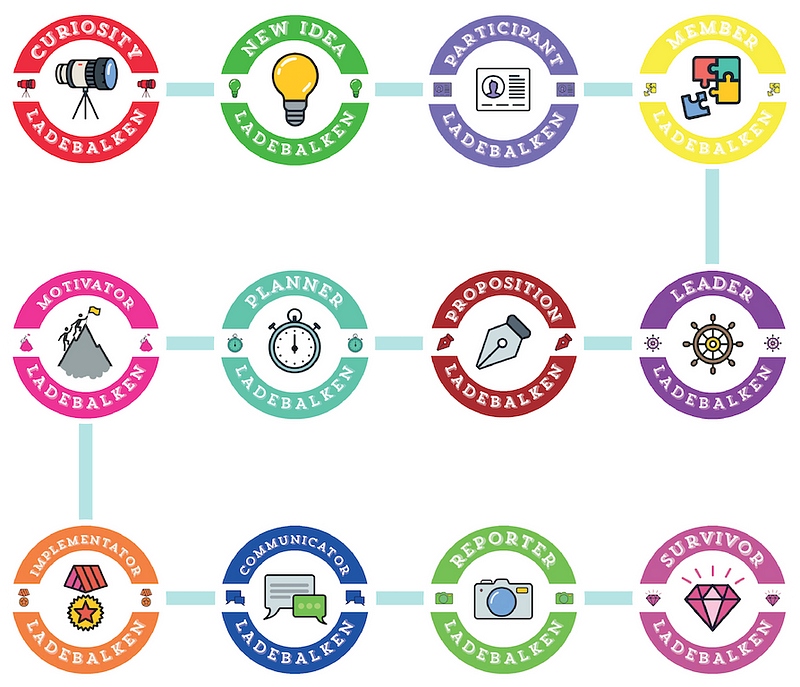
Badges by themselves do not have any value. However, to make the game interesting and help with the jeopardy effect, I have associated some point value to each badge which will be revealed at the end of the term. Thus, there are always benefits to collecting badges.
Gold:
Gold is one of the resources that a team can win in certain categories, as shown above. At any point of the game, a guild can exchange gold for points to move up the leaderboard.
The Leaderboard:
The leaderboard in the classroom would display the top 3 teams in two areas:
- Strand-wise: Strands are the broad areas in which math skills are divided. In the Alberta math curriculum, these are Numbers, Patterns and Relations, Shape and Space and Probability and Statistics. The teams that have solved the most questions for a content area, for example, Numbers, would be displayed on the leaderboard.
- Specialization-wise: These are the teams that have showcased their ability in applying Math concepts to multiple areas such as landscaping, agriculture and food.
- A guild leaderboard. The current winning guild forms the government. They get to decide something such as the next set of SMILE cards to other teams. When a ship runs out of water, they must do an extra activities to fix that, e.g. build a well.
Apart from the above, there would also be a board that display the number of cards completed by each team, and guild.
My role:
Teams will collect the SMILE cards in their area of interest from me. Once they complete a level for it, i.e., they have solved the cards and I am satisfied that they have met with the learning goal, they can move on to the next level. If a class is 80 minutes then at least 15 minutes of the class would be dedicated to team work, whether they can complete the SMILE cards together or keep working on the concepts that were covered in class that day. When creating the cards, I would be noting down for myself the learning objectives that each covers and would let them know, for example, “you can now apply your number sense skills to Level 2 of Agriculture”. Students are welcome to work collaboratively outside of the class as well and access the computer or their devices to look up possible solutions.
In reviewing their solutions, I am looking for the methodology that they applied as well as whether they got to the right answer. For example, there might be a team who solved a question in a way that I had not thought of before. For such a team, there would be a badge called ‘Fresh Eyes’ because they have shown me a new way to approach the problem. I would give feedback for each question and I plan to have one-on-one conferences with the teams when I am returning the set they submitted.
The SMILE cards do not have a time limit. It is in the hands of the students to do as many as they can during the course of the school year, based on the strategy that their guild has decided upon. The catastrophic events, however, work differently. They would be set up by me, once for each unit in the curriculum, and would need to be solved by the students in that week. I imagine them to be more elaborate, needing time for them to come up with a hypothesis, collect data and present their answers to the class in a creative manner. For example, towards the end of the year, an artifact could be to build a map of the planet that we have explored. For teams that would have completed most of the SMILE cards, they would have a more comprehensive picture of the world they now inhabit.
Rebalancing:
This is the hardest one to implement and think through. Here are two ideas that might work, with varying levels of complexity for implementation. If you know other ways to keep all students motivated to play the game, please let me know in the comments!
Option 1: Reshuffling per month
Every month, to ensure that the teams are well balanced and everyone is contributing to solving the puzzles and making the planet a place to live on, the teams would be reshuffled. Similar to how people can move between guilds, the reshuffling would provide this opportunity.
Using the Kagan technique, the teams (and with them, the guilds) would be put on quadrants by points earned so far: High, Med-High, Med-Low, and Low. High students should be grouped with Med-Low as often as possible. Same with Med-High and Low. The idea is that High students will be overly frustrated with someone so much lower and the Low will feel the same about the High. This would prevent one student doing all the work.
Let us consider two teams belonging to different guilds. Let’s say Suzie and Sam have 410 points while Tammy and Rod have 1000. When reshuffling the teams, I will consider both Suzie and Sam have individually 410 points and Tammy and Rod have 1000 each. To equalize the teams, I would put Suzie and Rod in one team, now with 1410 points and Tammy and Sam in the second team, also with 1410 points. Thus, after the reshuffling, the teams will be back to the same points again and can start afresh.
Disadvantages of this technique: This takes away the team-work element that I want to emphasize in the game and leaves almost every outcome to be decided at the end of the term where the students are in their final teams and guilds.
Option 2: Clawback mechanisms
As we wrap up the first unit in the class and more SMILE cards become open to the students to try out because they now have the skills to try them, competition would become more apparent. Clawback mechanism are when certain mechanics in the game are adapted according to where the teams are – for example, if a team that was at 10th position is the first one to complete the 2nd level of a set of SMILE cards, they could get bonus points to bring them back into the game or better items. Also, the exchange rate of gold can be higher for leading teams than for teams who are further down on the leaderboard.
I could also introduce a tax system where each week, a guild would have to pay certain points as taxes based on the number of points that they have. Similar to real life, there would be tax brackets that they would want to be under to not be taxed highly.
Disadvantage of this technique: I do not want students to stop themselves from trying out higher levels of SMILE cards or strategize in such a manner that they hand in everything at the end of the game, getting taxed the least over the term. Though I do not foresee this happening at the moment because the next level of SMILE cards will not be given to them unless the previous level has been solved. Thus, while they may be able to delay getting some points, they would have to hand over the cards to move forward in the game.
The Winner:
Both points and gold are associated with the individual as well as the guild. If teams are reshuffled, as explained above under Option 1, it would be based on points, not on gold. Thus, the final teams at the end of the term and the gold that each member has can affect the final outcome of the game. The guild with the maximum points at the end will gain control of the planet.
It would be a celebration of efforts by everyone.
Support from Educational Theories and Best Practices
Educational Practices behind Gamification
In the article above, I explored the five educational theories that we have to think about as educators when we think of gamifying learning for our students. These are scaffolding, self-determination theory, motivation, distributed learning and retrieval practice and episodic memory. Let’s now take a look at how each of these are incorporated in my classroom.
Scaffolding
Scaffolding involves giving students hints, clues and feedback throughout the learning process. In the game environment, this is incorporated through group work and different levels of difficulty for the SMILE sets. There are multiple chances to get points for solving a set correctly. Since I am actively involved in the process of reviewing student progress, I will provide appropriate scaffolds.
Self-determination Theory
Self-determination theory says that people are motivated when they have autonomy, i.e, they feel in control fo the situation, they feel competent to complete the task at hand and are able to showcase their learning to others. The choice of SMILE cards in specialization and level give teams autonomy in exploring their interests within the game. The different levels of SMILE cards increase their competency and confidence as they can progress to the next level only after solving the prior level. Though the leaderboard only shows three teams, there would also be a board for badges for the teams. Thus, teams would be able to share their progress with the rest of the class at all time.
Motivation
Motivation can be intrinsic or extrinsic. However, both types exist together in any educational setting. The badges and points serve as extrinsic motivators because they can visible to all teams. Students might work harder to be on the leaderboard or have the most number of badges. On the other hand, having the ability to choose and then ask for the next level of SMILE cards is intrinsic motivation because it gives the teams a sense of accomplishment when they hand in their work and receive a brand new set which they are now capable of solving.
Distributed Learning and Spaced Practice and Retrieval
The students will learn the concepts little-by-little everyday. At the end of each day, they will have some time to work on their chosen SMILE set. Since the different levels cover increasing number of concepts, they would be able to refer back to what we covered in the class many chapters ago at times. The catastrophic events will likely use multiple concepts and this will allow for spaced practice as well.
Episodic Memory
Episodic memories contain information about life experiences, usually associated with a particular time or place and are typically tied to emotions. The setting of the game and the transformation of the classroom into a planet (you can bet there will be much decoration) will help students relate their adventures in exploration to concepts and remember them better. I particularly hope that the catastrophic events lead to episodic memory.
Conclusion
I was recently reading the book Your First Year (2016) by the Whitakers. An important classroom management strategy that they mentioned was that there should never be down time for students in the classroom.
As teachers, we should plan to ensure that every minute of the class is utilized and spent in learning. There will always be students who work at a faster pace than their peers.
I think gamifying the classroom, giving students choice in what they want to explore as well as allowing them to work together is a great way to ensure that down time does not happen and that student students are always engaged in learning and exploring the curriculum. Jo Boaler has expressed this quite nicely:
The principle of allowing students to form their own learning pathways and encounter individualized content when accompanied with opportunities for group work and collaboration, offer potential for high-level work to be offered to all students. — (Boaler, 2015, p. 118)
The questions on the SMILE cards are based in London and I am building new ones now. You might have realized that this is a multidisciplinary game. The specializations include a number of areas, from biology and physics to social studies and technology. Inhabiting a new planet after having lived in the comforts of Earth can indeed be quite challenging. I hope to work with other subject teachers to make the catastrophic events as realistic as possible (and inspired by Earth) as well as get their input on the SMILE cards.
Also, I am not using SMILE cards in the individualized set-up that Jo describes; instead, the cards are theme-based and the teams get to pick the sets they want to do, depending on the broader scheme of the game.
Please offer suggestions to make this a better game. There is always room for improvement. 🙂
References:
Boaler, J. (2015). Mathematical mindsets: Unleashing students’ potential through creative math, inspiring messages and innovative teaching. John Wiley & Sons.
Whitaker, T., Whitaker, K., & Whitaker, M. (2016). Your first year: how to survive and thrive as a new teacher. Routledge.


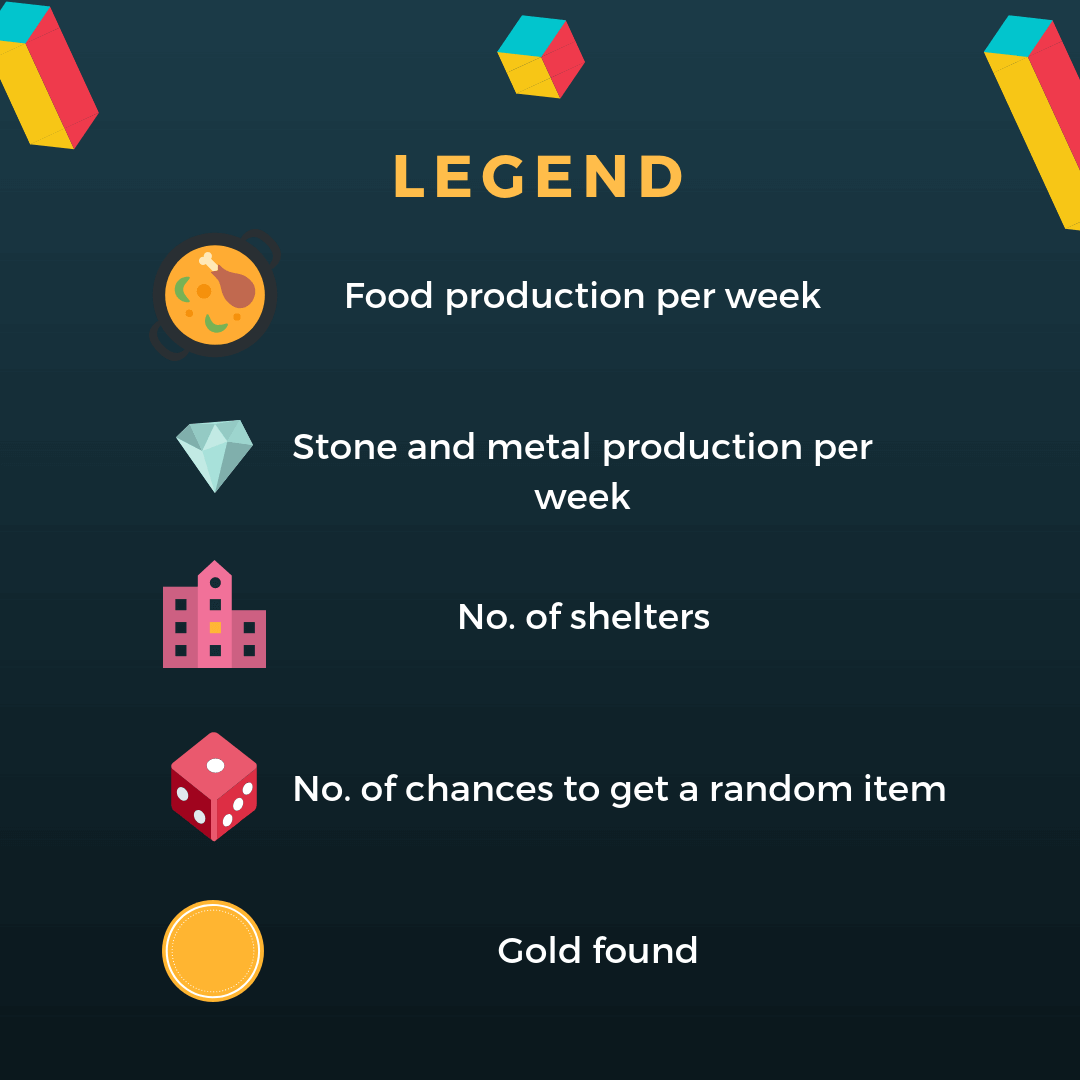
Be First to Comment